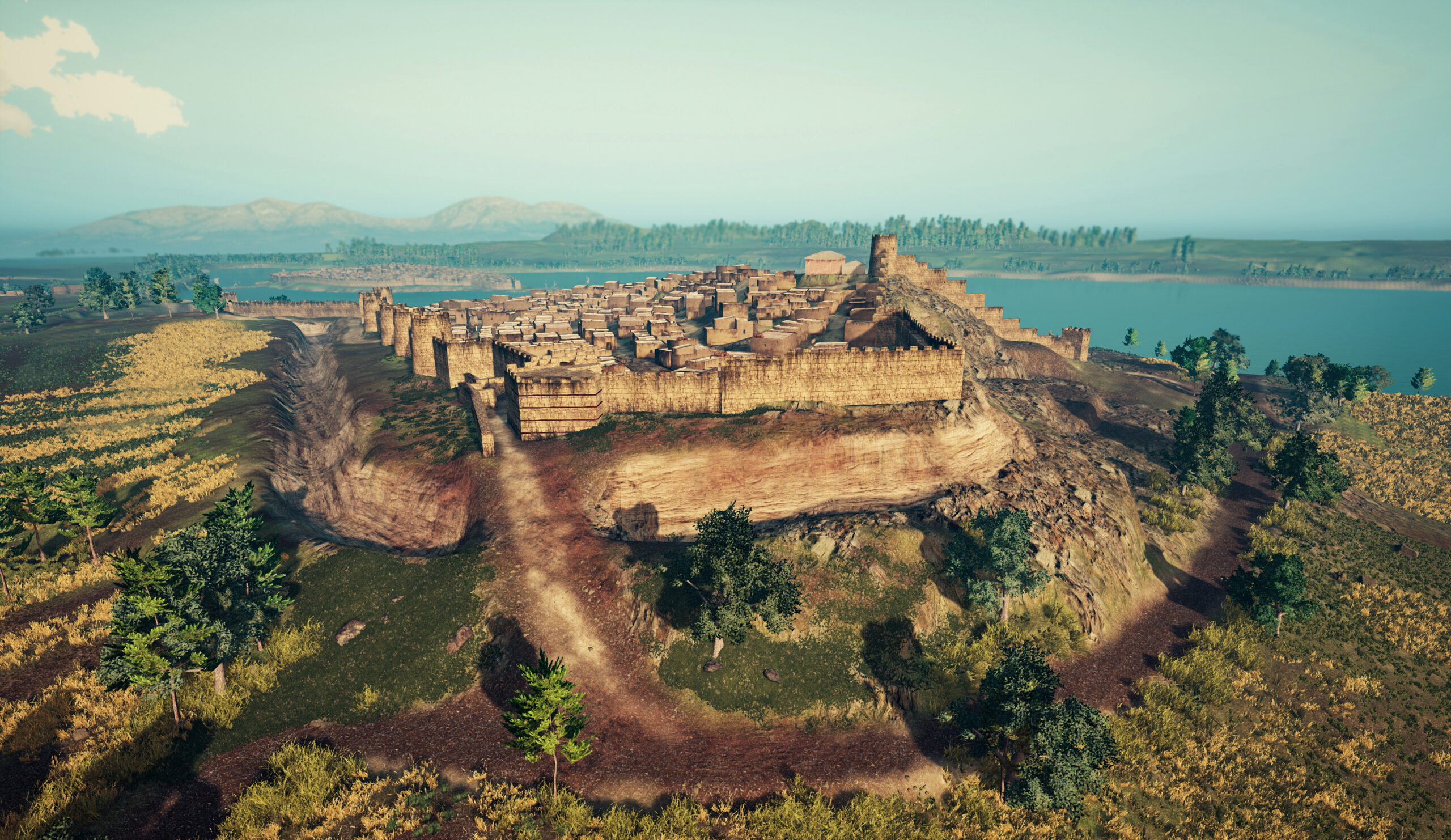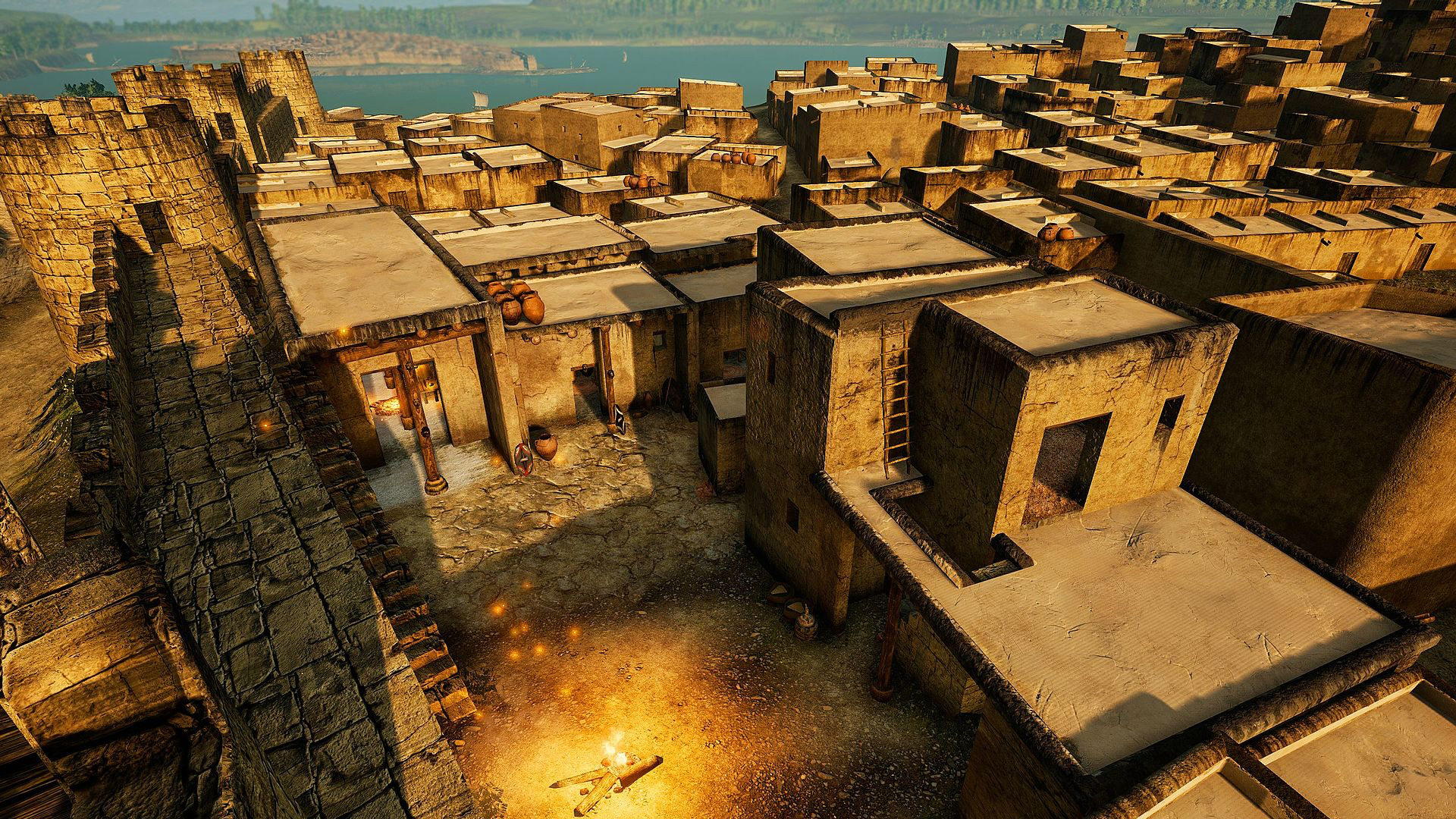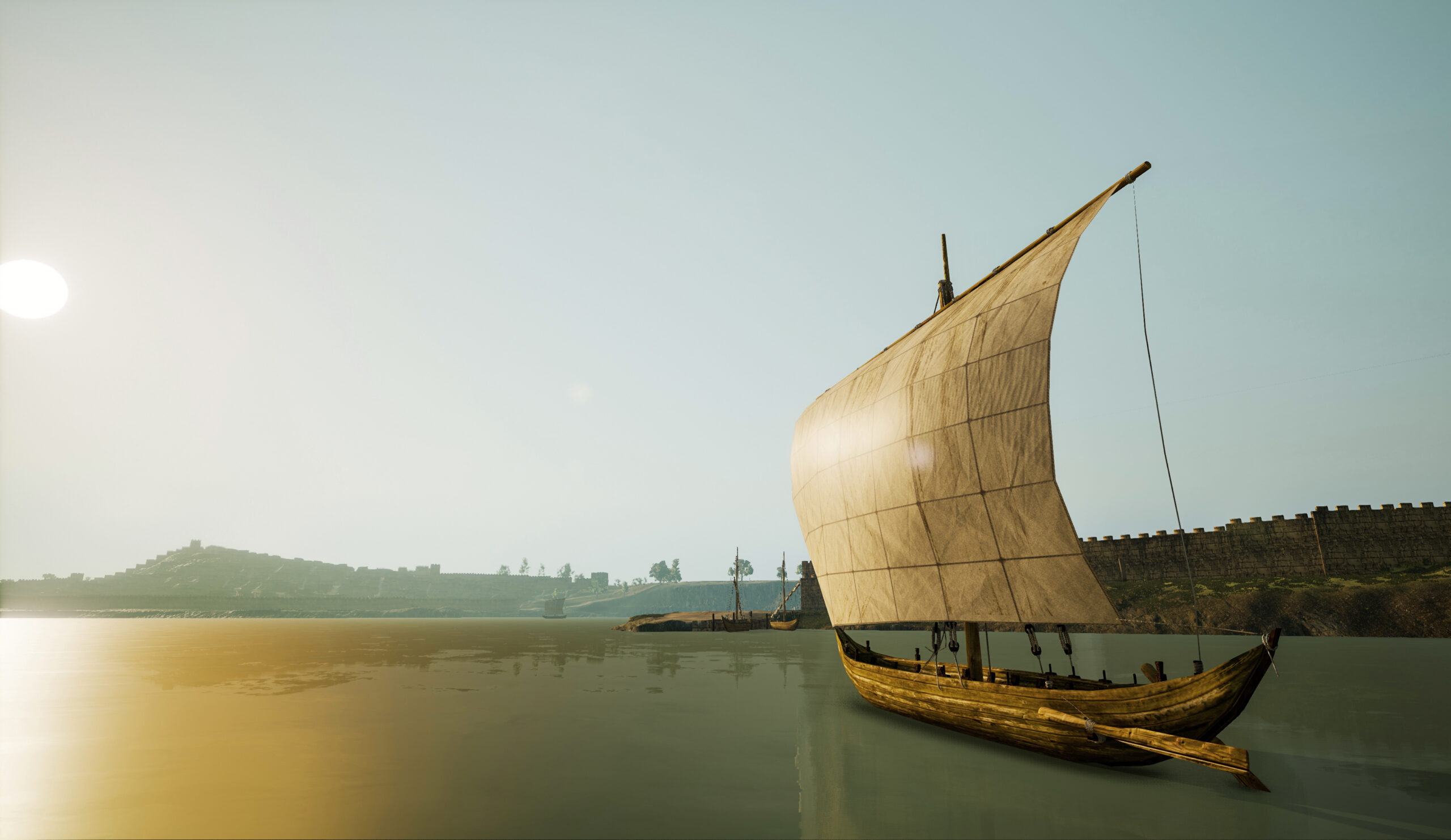We have digitally reconstructed the Iberian city of Ullastret as it was on 250 BC. This is the epoch when there is more information available. The result is a detailed 3D reconstruction that stands out because of the accuracy scientifically backed up in the archeological side and because of the realism of the visual representation side.
- Client: Museu d'Arqueologia de Catalunya Ullastret. Patrimoni en Acció del Departament de Cultura and l'Obra Social "la Caixa"
- 2016
- Reconstrucció digital / Realitat virtual
The Iberian site of Puig of Sant Andreu of Ullastret (Baix Empordà) is considered the largest Iberian city in Catalonia. Puig of Sant Andreu of Ullastret had a second settlement very near that is known as Illa of Reixac located in the middle of large lake. The peak of splendour of the Iberian city was around the IV-III BC when the population exceeded 6,000. Temples, streets, noble houses… and overall the monumental walls made of Ullastret a great capital with a central role in trading altogether with the Greek city of Empuries that was nearby.
3D reconstruction.
Scientific and archeological accuracy.
We worked closely with the archeological team of the Museu d’Arqueologia de Catalunya-Ullastret in order to translate all the information collected by scientists and archaeologists. Street by street we lifted all the houses and fitted them to the relief.
The first part of this reconstruction focused on the landscape surrounding the Iberian city, starting with the perimeter of the lake, followed by the vegetation that existed at that time, the dirt roads and the fields. As for the architecture and urban configuration, the team used the designs that were able to draw from the existing remains and they also used those obtained through geophysical explorations. The archaeological information allowed the team to formulate hypotheses about the heights of the houses, the construction systems, the roofs, the uses, the objects inside and everything related to their use.


Virtual reality.
Game engine.
We decided to build the city of Ullastret with the video game building software Unreal Engine. We chose this software because of its potential in creating landscapes and because of the quality of the photorealistic results.
One of the special features of this project is that the process was not carried out using the software tools commonly used for architecture and archeology. Instead, the team opted for the video game construction tool Unreal Engine that has vast potential. This tool allows also to create immersive experiences, for example, with the use of Oculus Rift, Samsung Gear or HTC Vive virtual reality glasses.


International recognition.
Digital innovation.
The virtual reconstruction of the Iberian city of Ullastret has been recognized nationally and internationally.
This project was invited to participate in the 2016 edition of the international exhibition Archeovirtual, organized by the Instituto per le Tecnologie Applicate ai Beni Culturali (Consiglio Nazionale di Recerca) in Paestum (Italy), considered the most important of the international competitions dedicated to virtual archeology.
In terms of virtual development and 3D modeling of Ullastret’s archaeological complex, Burzon*Comenge studio won the Golden A’ Design Award, in the category of design linked to culture and cultural heritage, in the edition 2016-2017 of these international awards held in the city of Como (Italy).
In 2017, the project was one of the most prominent finalists in the Heritage in Motion Awards by the European Museum Academy, Europa Nostra and Europeana at a ceremony held in Skopje, Northern Macedonia. The jury valued above all the ambition, innovation and scientific rigor applied in the development of the project.
Philipp von Zabern, a German renowned and prestigious publisher of history and archeology books, featured the virtual reconstruction of the Iberian city of Ullastret in a 2019 publication that includes some of the best digital reconstruction projects of archeological sites from all over Europe and the Middle East developed in recent years.
